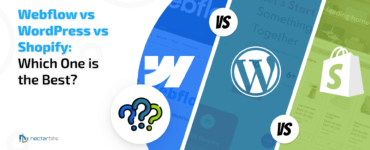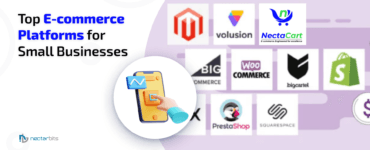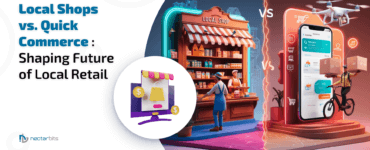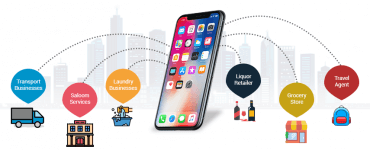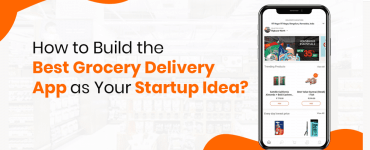Looking at the huge success of top honchos like- Airbnb, Uber, Alibaba, and Amazon that are bathing billion dollars, the new fishes are trying to play catch-up with them with two-sided Ecommerce marketplace development. The popular Ecommerce marketplaces have started with small but scored high popularity because the values were clear from the beginning.
For instance, Airbnb resolved the chicken and egg problem of the real estate market where the pool of customers looking for a cost-effective rented house or apartment for a few weeks, days, or months are connected with local people who want to rent the extra space in their apartment or vacant house. The USP of the app helped in matching the customers’ demand for easy and inexpensive rental houses with owners of properties.
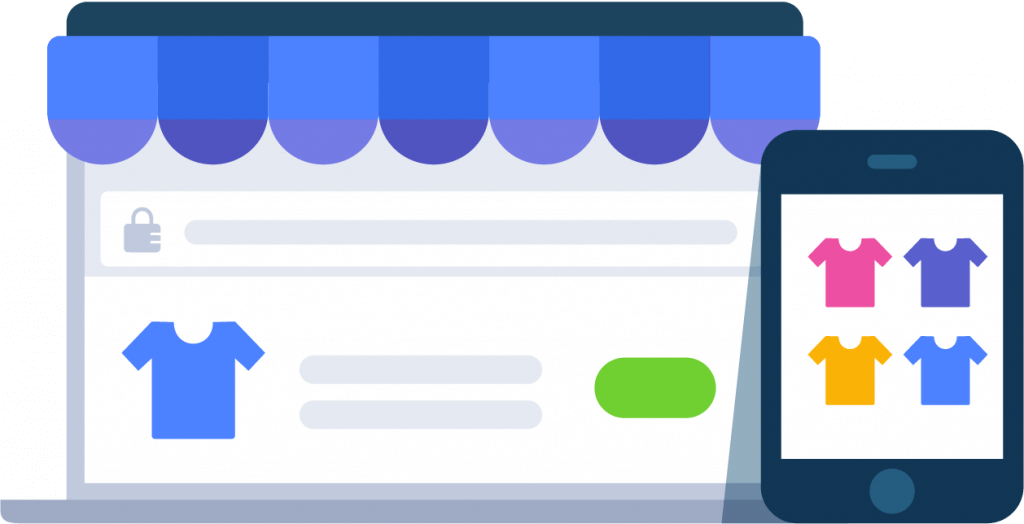
If everything goes right, the rewards are in abundance.
What Is a Two-Sided Ecommerce Marketplace?
It’s a business model that provides a platform to the two different user groups where they can get benefited from the economic exchange on a large network. The website act as an intermediary that allows buyers and sellers to meet, connect, identify products, facilitate the transaction, and so on… The owner gets the commission on every transaction that occurs on the platform with no need to maintain or manage inventory.
Uber is the best instance of it that connects riders and drivers and gets a percentage of the transaction amount after every ride. Uber owns no car or drivers but builds a platform where riders and drivers can collaborate and connect. Also, the company sets rules, terms, and conditions, and enforces some regulations that drivers have to follow for the seamless functioning of the business.
The Benefits Of Building a Two-Sided Ecommerce Marketplace
- High ROI
Despite the corona crisis, the two-sided Ecommerce marketplaces have made a big debut with an improved bottom line. The platforms have thrived in the market with an increased userbase, uplifted sales, and augmented revenue.
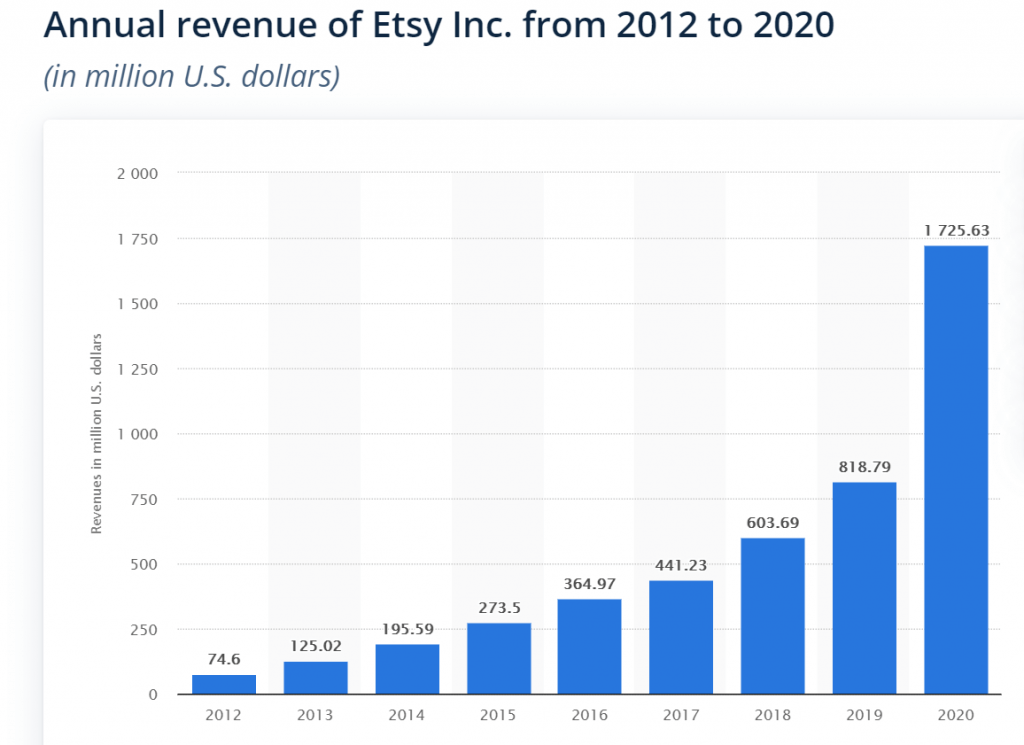
Create one more bar graph like this based on the following stats given in the bullet points below.
- Amazon revenue for the twelve months ending December 31, 2020 was $386.064B, a 37.62% increase year-over-year.
- Amazon’s annual revenue for 2020 was $386.064B, a 37.62% increase from 2019.
- Amazon’s annual revenue for 2019 was $280.522B, a 20.45% increase from 2018.
- Amazon’s annual revenue for 2018 was $232.887B, a 30.93% increase from 2017.
Not just established players, but smaller marketplaces have also received funding and generated millions of dollars in revenue. For instance, Eneba received 6.55 million euros in funding, and the aquaculture platform made a big hit with its profit growth by ten-folds in 2020.
- No production required
Being working as an intermediary, the platform doesn’t need to worry about manufacturing anything. For example, Etsy- the two-sided marketplace connects the hand-made items sellers and buyers without producing anything. It provides a platform where the people in need of buying handmade readymade items will get connected with suppliers.
- Scalability
MVP approach is more recommended for the big establishments because pouring in a huge amount of time, dollars, and efforts goes into vain, if the marketplace idea won’t succeed. That’s why the new entrepreneurs start with MVP way and if they find enough customer traction, the business is easy to scale gradually. It’s a long process as success can’t earn in a day, so it’s better to test the market and then scale the marketplace with more vendors, products, and services rather than reinventing the wheel.
- Don’t require to offer service
The service-based platforms where distinct service providers provide the services to the customers, the owner don’t require to hire service providers. Registered service providers like- Fiverr platform allow professionals to get registered and offer the services to the customers. The professionals won’t work for a company, instead, they work as a freelancer that gets connected with the people in need of services.
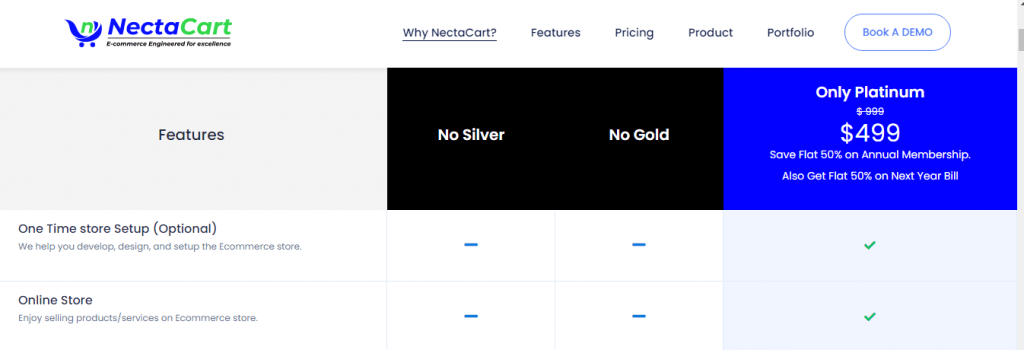
- Say no to inventory management
Amazon operates globally without owing a single thing in the inventory. It connects people who need various things falling under various categories and sellers who have stock to sell them. The marketplace giant just connects them and set aside specific instructions, rules, and terms and conditions.
Interested in two-sided Ecommerce marketplace development? If so, here’s the way to go…
How To Engineer The World-Class Two-Sided Marketplace?
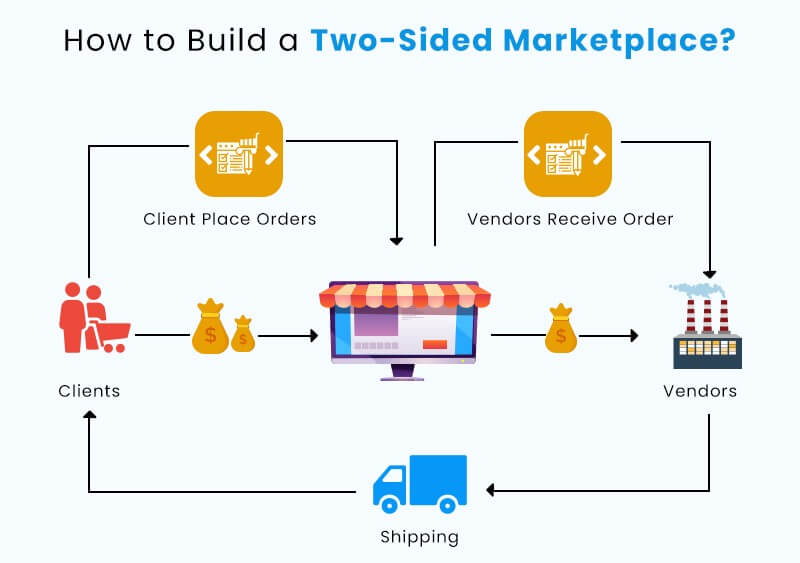
Three different interfaces are built for three stakeholders where each interface has a list of features. Let’s dive in!
Customers Panel Marketplace Feature
- Registration: Allow customers to sign-up easily via social credentials, phone number, or email id. But, don’t make registration compulsory before purchasing because some customers like to checkout as a guest. Later on, you can make the customers register to get the benefit of the features such as order tracking, order history, loyal points, and more.
- Seamless navigation: Enable customers to easily find the product or service they are looking for with an easy navigation structure, and auto-complete and auto-suggest feature in the in-app search box.
- Place order: Deliver a wow experience to the customers at the time of checkout by making the checkout process short and easy.
- Payment: The multiple payment options help because a variety of customers prefer distinct ways of payment to pay for the products or services. For instance, credit cards, PayPal, credit-as-a-service, ACH transfer, mobile wallets, and wire transfer payment modes are favored by the customers.
- Feedback: The ratings and reviews for the purchased products or services help the new users in the product research and decision-making process.
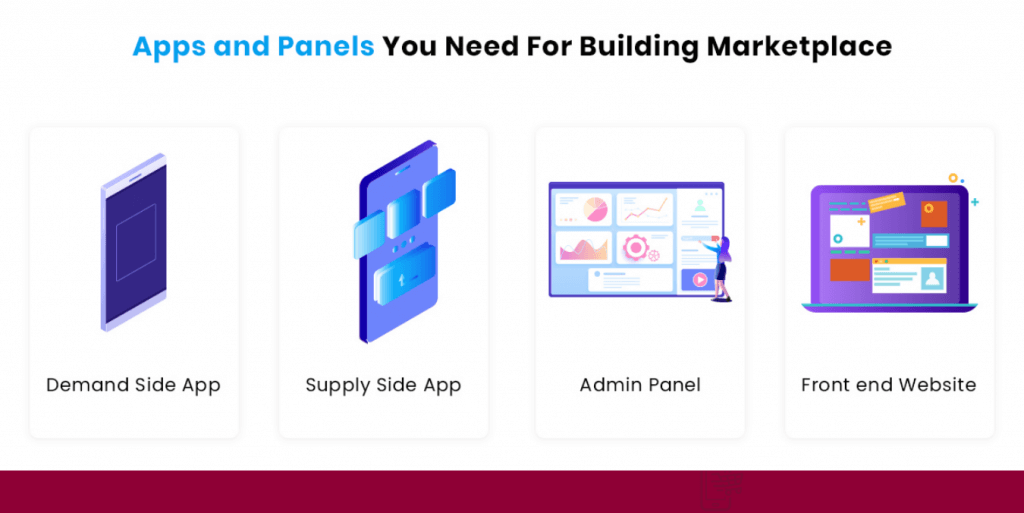
Vendors Panel Marketplace Feature
- Registration: The verified vendors are provided credentials to register on the website. The vendor’s KYC, business license, registration documents, and other things are collected to prove their trustworthiness and reliability.
- Profile: The vendor can create the profile by including business information like- location, product or service name, ratings, certificates, and other factors that are viewed.
- Dashboard: The seller can view, access, and manage the product category, discounts or offers, and sales volume.
- Analytics: Track the business performance, review listings, and generate reports to view overall performance and pitfalls to avoid.
Admin Panel Marketplace Feature
- Central dashboard: Admin can manage vendors, customers, and all transactions in a single place.
- Vendor management: The registered vendors and the uploaded products are viewed and managed.
- Customer management: The registered and guest customers and the purchase is viewed and managed.
- Earning management: Each vendor’s earning and total earnings are viewed and managed.
- Feedback management: View and manage which ratings and reviews to approve or disapprove to display on the website.
What’s More? A Few Trends That Can Take The Ecommerce Marketplace Experience To A New Level
- Enhancing the Ecommerce marketplace with AI and ML technology
AI and ML-powered algorithms intelligently analyze users’ browsing behavior, buying history, and purchasing patterns, and then connect the dots to make personalized recommendations to them. The marketplaces are highly leveraging the algorithms in gaining insights and helping the users in making data-driven decisions for product purchases. The AI-based chatbots are also a powerful weapon that continuously learns and gets trained to improve conversion and customer satisfaction.
- Making marketplace mobile responsive
Omnichannel experience has become vital if you are targeting a broad customer base. It makes it essential to optimize the marketplace for mobile so that customers and prospects can access it from anywhere. The marketplaces can opt for native apps, cross-platform apps, or go the PWA way, depending on the business timeline and budget needs. However, make certain the design must be responsive irrespective of device size and resolutions.
- Introducing multiple payment methods
Payment is cash or via debit cards, credit cards, or mobile wallets has already become a norm in the industry. To make the app stand out, the marketplace should offer ACH transfer, credit-card-as-a-service, one-click payment, and crypto-currencies, which are regarded as most convenient by the customers. The convenience brings the customers back to the marketplace again, so don’t forget to include advanced payment alternatives.
- Dynamic pricing and negotiation
The dynamic pricing model has emerged as a core component of the B2B marketplace model where the price of products or services is changed dynamically. Remember, Uber changes the prices dynamically based on location, time of the day, delivery speed, and peak hours to meet supply and demand. The algorithms automatically get changed and display the price to the customers accordingly. The feature is integrated using third-party services or built from scratch.

- Augment the reality with AR technology
The technology that has transmogrified reality is not in the nascent stage; instead, the several AR use cases have amazed the world. A popular example of it is the IKEA AR app that allows the users to visualize how the furniture would get fit and look in the home after purchasing. The augmentation feature helps them virtually try the furniture before making the actual purchase and deliver a wow experience to the customers. It makes buying an informed decision.
- Optimize the marketplace for voice search
The world has reached the point when lifting a finger on mobile appears a task to the people. That’s why the Ecommerce marketplace integrates a voice search feature that allows the users to search for the product just at their voice command.
It saves the users’ time and makes them feel as if the brand stays at the top of technology advancements. However, the voice queries are different from text queries, they are longer and have a conversational tone. The brands should adjust the keyword strategy to harness the power of voice UI optimally.
The Challenges That You May Face
Finally, you know everything about a two-sided marketplace that appears rosy. It’s not the case always. In the plain-sailing journey, you will find a couple of hiccups that may hinder growth and progress. Here, we have described the challenges and their solutions.
- Chicken and egg problem
There are two things- the sellers can’t sell anything if you don’t have customers and the customers can’t purchase anything if you don’t have sellers. It means having both- sellers and buyers are essential to get the marketplace up and running.
You can resolve the problem by providing limited access to the users and letting them use the marketplace unless it’s fully launched. It helps in earning enough users before the marketplace is released in a full-fledged version. Also, the marketplace can start with a small number of vendors and more vendors join the race as the platform score popularity.
- It’s a time-consuming endeavor
The rookie players with no technical knowledge, little domain expertise, and low budget can’t dream of gaining success quickly. The Ecommerce marketplace development and chicken and egg problem solving even make the marketplace a time-expensive affair. That’s where, buying and customizing the readymade marketplace, and then scaling it gradually is the best solution. It reduces the development time and cost that helps them launch an Ecommerce marketplace at diminished risks quickly.
- Customer satisfaction
In a two-sided marketplace, the owner has to keep both parties- sellers and buyers happy and contented. The owner has to keep an eagle eye on supply and demand, in addition to their needs so that they keep serving the customers hassle-free. For instance, Uber regularly update its policy in effect for drivers’ benefits or launch new features to keep them working seamlessly for the company and complete as many rides as possible in a day.
- Reaching liquidity
The sellers expect what they have uploaded on the platforms would get sold as early as possible. The customer expects that they will find what they are looking for. When the expectations of both sellers and customers are met, it’s termed as liquidity, which is difficult to reach initially when the marketplace is launched.
The challenge is addressed if you enter an industry where a specific line of product or service is not sold online or the category of product where competition is least, that’s where it’s easy to make both buyers and sellers reach their goal. It’s difficult, but worth it, if efforts are made in the right direction.
- Meeting curated product demands
The customers have raised the bar of expectations where they anticipate getting high-quality products and speedy services. That’s why you have seen the recommended sort of listings on marketplaces that allow the customers to view the products at a reasonable rate and have positive reviews. Such curation makes the customer happy and brings them back to the store.
The curation of products is done either manually or automatically via algorithms. When algorithms are set with customer behavior data, they automatically create listings based on the customers’ preferences to increase satisfaction.
How much does it cost to build a two-sided marketplace?
We often receive the client’s request for what’s the cost of building a marketplace like- Amazon or a platform like- Uber. But there is no ballpark cost that we can tell. The development cost estimation count on several factors such as development, UI/UX designing, project management, maintenance, technical support, and marketing, which determines the budget, scope, and timeline.
Identify your marketplace development needs, then check it with the business consultants and technology consultants to know how much you need to spend for full-fledged development.



